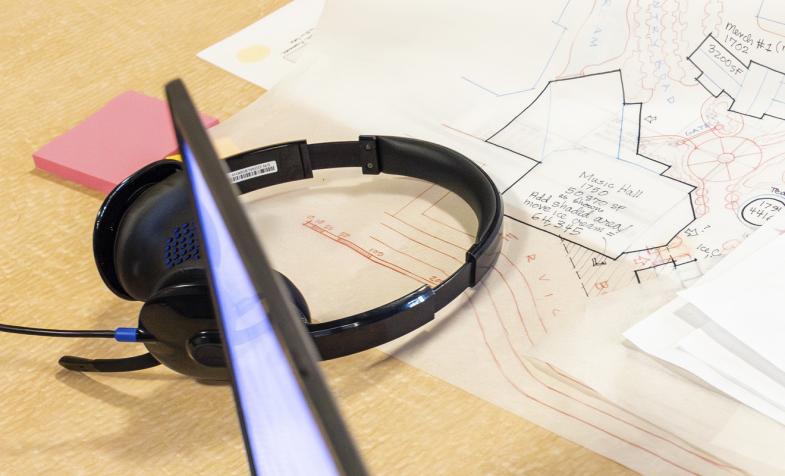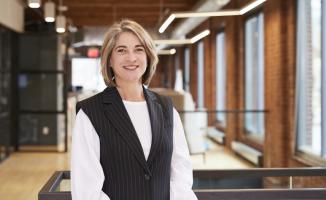Flexible vs. Prescriptive Work Environments – Why Cuningham Works from Anywhere
Flexible vs. Prescriptive Work Environments – Why Cuningham Works from Anywhere
The workplace has an identity crisis.
It’s no secret the dynamics of work are undergoing a profound shift.
While some organizations are advocating for a full-time return to the office, proponents of remote and hybrid work urge caution, pointing to increases in productivity enabled by the rapid transformation of digital technology. Amidst this uncertainty of how employees will or will not occupy shared space, organizations are both exploring new, and relying on familiar, ways to cultivate culture and community.
People-focused leaders can cut through the noise and benefit from recognizing that their organizations are composed of a diversity of team members, each with their own unique needs. How can we strike a balance that supports those seeking in-person experiences and connections and those who find their productivity optimized in remote setups? Any strategic approach that treats these distinct groups uniformly is likely to cause friction and may very well fail.
For design firms specifically, embracing flexible work formats is also a pathway to elevate client outcomes, as firms can build teams uniquely fitted for each project regardless of location. Additionally, when team members are given the freedom to operate in environments which best foster their creativity, design solutions become more human-centric, and firms become more agile and adaptable to change.



Cuningham, anywhere
Given these varied and changing workplace expectations, Cuningham has developed a comprehensive Work from Anywhere (WFA) strategy that is consistent with our commitment to fostering a culture of trust, design excellence, and flexibility.
The strategy, which provides employees the opportunity to stretch their work boundaries beyond our current office locations to anywhere in the United States, also allows for flexible work hours, includes mobility and equipment stipends, as well as a benefit that supports working caregivers.
By encouraging our existing and future talent to collaborate in a variety of physical and digital environments, we aim to be purposeful with what best suits the design and delivery of integrated solutions to the most pressing issues facing our clients and communities. Of course, this does not mean we are doing away with our offices. Rather, our physical spaces are becoming even more important conduits for teams to engage in design discourse, mentorship opportunities, and to create curated experiences and hands-on workshops with our clients, communities, and industry partners.
Most importantly, our approach to work is not set in stone. We are embracing experimentation. As we continue to monitor and measure the variety of WFA experiences, listening to and quantifying the perspectives of diverse team members, client experiences, and design outcomes will inform adjustments to our strategy.



Work from anywhere: how's it working?
With the flexibility given to Cuningham’s team members comes a broad range of applications. Team members have reported that, while not without its challenges, Cuningham’s WFA strategy has curbed burnout; allowed teams to bring their “whole selves” to their work; and inspired us to be more intentional about why we come together in-person versus Zoom.
It has also helped us define our strategy in terms of the adoption of new technologies–for instance, which platforms and tools mimic the flexible approach we are taking as a firm to add value for both in and out of office workflows? What best practices in our own hybrid work are we imparting on our clients? We recently discussed the successes—and challenges—with three of our team members personalizing our strategy. Check out what they had to say below:

Matthew Trotter – Architect
“Since Cuningham has moved to a WFA model, I’ve found that going into the office puts me in a uniquely creative mindset. Our physical office now feels to me like a sanctuary. It’s a place where I can separate myself from the baggage of everyday life and just totally focus on one thing—design. In this way, the office feels almost sanctified. Which is interesting, because before WFA, the office was just another part of my “ordinary” life.
Not having to be in the office makes it so much more special, to me. When I choose to go in, it’s because I’m in the right headspace. Whereas before, a coffee break conversation was five minutes of small talk, even the smallest interaction can now easily become a 40-minute, deeply-philosophical design discussion—all because coming to office is now an intentional act.
Knowing that I can use our physical space as little or as much as I needed to really keeps my focus and creativity at a high level. If I’ve been working from home all morning and I’m feeling creatively stumped, I’ll head into the office and let my conversations with other designers rejuvenate me. Likewise, if I’ve been in the office collaborating and am feeling low on energy, I can head home and zero-in on my tasks. With our new WFA strategy, I’m always finding new ways to connect with my work.
I also leverage our office for its powerful ability in community outreach. As President-Elect of SoCal NOMA, I try to bring in people from the inner city and other underserved communities—kids who will statistically otherwise never meet an architect, let alone a minority architect. By bringing these community members into our office, they can connect the dots. They can better understand the full scope of possibilities out there for them. This kind of outreach is impossible without a physical office.”

Jessica Kocak – Project Architect
“I have a two-year-old at home and Cuningham’s WFA strategy has been a lifesaver.
Where I work on a given day is totally contingent on whether everyone at home is healthy and what my current fatigue level is—I may go to the office several times a week or not for an entire month. Cuningham’s flexible work hours also mean that if I need to take a few hours off during the day unexpectedly because of my daughter, I can easily come back after her bedtime and finish up what I was working on.
Because my daughter is now in full-time daycare, if I was required to go into the office every day, she would be spending much more time there. Essentially, I’ve turned my commute into extra family time.
This past winter, my daughter was home sick from daycare a lot. If I was required to be at the office every day, I would have blasted through my PTO and would have been asking for additional time off. Instead, I was able to take her to my mom's house and work from there most of the day, balancing responsibilities with my husband hour by hour.
Overall, having this type of flexibility while raising a newborn has really prevented burnout. I’m just happy that Cuningham’s WFA Strategy meant I didn’t have to choose between being a mom and my professional career.”

Megan Nowak - Architectural Designer
“When Cuningham introduced WFA, I immediately asked myself, ‘do I need an office?’ I knew I loved my job of Cuningham, but many of the places I wanted to live weren't necessarily the locations of our offices. I wanted to live somewhere where I could maximize my hobbies, like mountain biking. I also wanted to be by the ocean. So I used the opportunity to move to Santa Cruz for a year, and then to Bellingham, Washington, where I currently am.
For me, becoming fully remote wasn’t a choice to not go into the office. Rather, it was a choice to create the life I want beyond where my physical office is. Now that I’m remote, I embrace “third spaces” – every Friday I work from a cafe that has great Wifi, daylight, and coffee.
That’s not to say everything is perfect. Being fully remote is a little less collaborative, inherently. And I think as an industry, we're still learning the right tools and best workflows. While it hasn’t negatively impacted me, it certainly takes more effort on my and the firm’s part to stay connected and build relationships across the firm.
While I’ve loved my time in Santa Cruz and Bellingham over the past three years, I still have the bug that wants to go to the next spot. Maybe the East Coast. Maybe Utah or Montana. Eventually, I want to move back to Wisconsin near my family. Cuningham’s WFA Strategy makes all of these options available and achievable.
Ultimately, I am just very grateful for Cuningham’s approach to work. I feel like I'm living a life uniquely suited for me and not a life limited by the physical location of my work.”
Next steps
As we move forward, the diversity of work ecosystems at Cuningham empowers our team members to approach work in a more purposeful way, strengthening both the value we add for clients and our internal culture. Blending these different approaches to work into a cohesive, collaborative environment will also inform how we approach integrated design—adaptable to change and agile in our thinking. Interested in learning more? Reach out below or check out our current opportunities.

